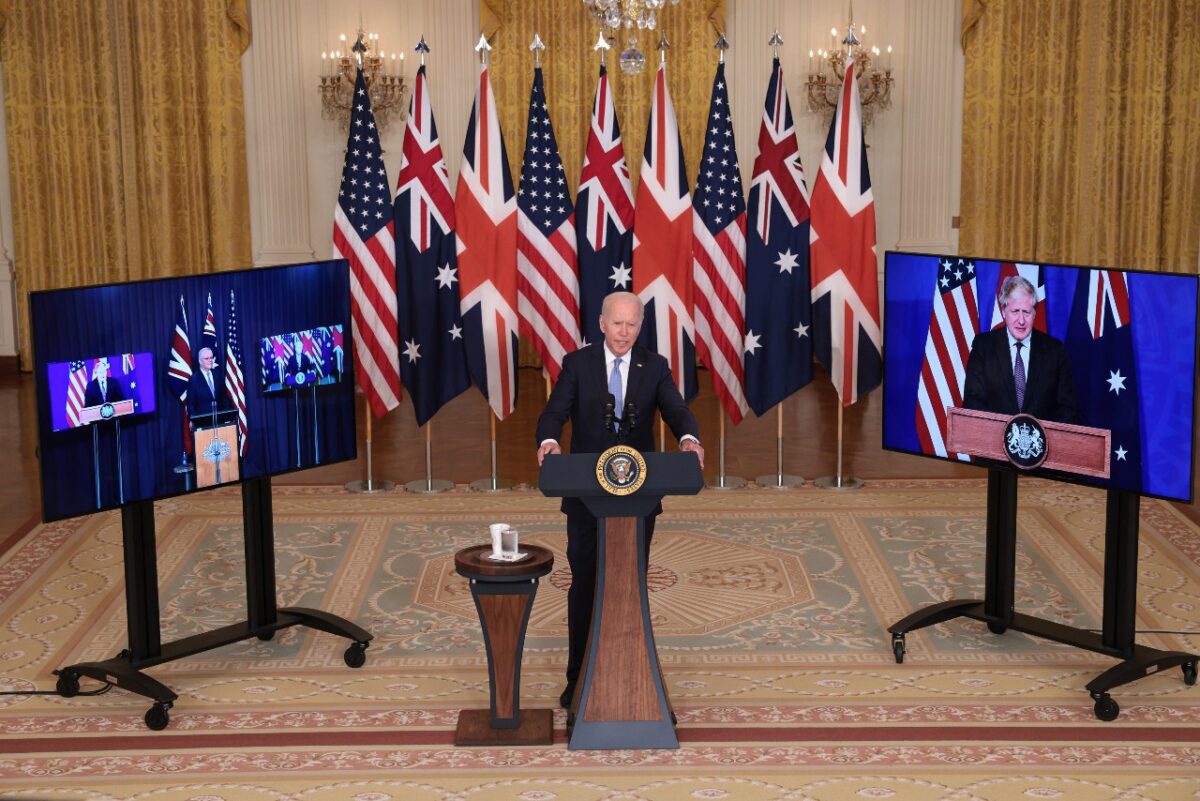U.S.-China Tensions: Assessing The Risk Of A New Cold War

Table of Contents
Historically, U.S.-China relations have been a complex mix of cooperation and conflict. From the initial establishment of diplomatic ties in 1979, marked by periods of economic engagement and strategic dialogue, the relationship has evolved, frequently punctuated by disagreements over trade, human rights, and regional security. Today, however, the scale and intensity of these disagreements pose a significant challenge to global stability.
Economic Competition and Decoupling
The economic rivalry between the U.S. and China is a primary driver of current tensions. This competition manifests in several key areas:
Trade Wars and Tariffs
The trade war initiated under the Trump administration, characterized by the imposition of tariffs on billions of dollars worth of goods, significantly strained bilateral relations.
- Examples: Tariffs on steel and aluminum, retaliatory tariffs on agricultural products, and escalating trade disputes over intellectual property.
- Consequences: Disrupted global supply chains, increased prices for consumers, and uncertainty for businesses operating in both markets. This economic decoupling represents a major shift away from the previous era of globalization and interconnected economies. The resulting impact on global trade is significant and far-reaching.
Technological Rivalry
Competition in crucial technological sectors fuels further tension. The race for dominance in 5G, artificial intelligence (AI), and semiconductors has become a focal point of the rivalry.
- Examples: Restrictions on Chinese investment in U.S. tech companies, accusations of technological espionage, and efforts by both countries to build domestic semiconductor industries.
- Consequences: Increased investment in research and development, potential for technological protectionism, and the risk of a fragmented global technology landscape. The battle for intellectual property rights adds another layer of complexity to this already intense competition.
Geopolitical Rivalry and Military Buildup
Beyond economic competition, geopolitical rivalry and military buildup exacerbate U.S.-China tensions.
South China Sea Disputes
Territorial disputes in the South China Sea, involving competing claims over islands and maritime resources, have led to increased military activity.
- Examples: China's construction of artificial islands, naval deployments, and assertive actions against neighboring countries.
- Consequences: Heightened regional tensions, increased risk of naval incidents, and challenges to the established international order. The militarization of the South China Sea threatens regional security and stability.
Taiwan Strait Tensions
The issue of Taiwan represents a potential flashpoint for military conflict. China considers Taiwan a breakaway province and has vowed to achieve reunification, by force if necessary.
- Examples: Increased military exercises by China near Taiwan, US arms sales to Taiwan, and heightened rhetoric from both sides.
- Consequences: The potential for miscalculation and accidental escalation is high. The One China policy remains a significant point of contention, and any military intervention could have catastrophic global implications.
Ideological Differences and Propaganda
Fundamental differences in political systems and ideologies further fuel U.S.-China tensions.
Human Rights and Democracy
The contrasting human rights records of the U.S. and China remain a source of friction.
- Examples: Concerns over human rights abuses in Xinjiang, Hong Kong, and Tibet, leading to sanctions and diplomatic tensions.
- Consequences: Strained diplomatic relations, accusations of hypocrisy from both sides, and challenges to international norms on human rights.
Information Warfare and Propaganda
Both countries engage in information warfare and propaganda campaigns to shape international narratives and influence public opinion.
- Examples: State-sponsored media campaigns, online influence operations, and the spread of disinformation.
- Consequences: Erosion of trust, polarization of public opinion, and increased difficulty in achieving constructive dialogue. The spread of misinformation online exacerbates existing tensions and fuels mistrust.
Potential Pathways to De-escalation and Cooperation
Despite the significant challenges, pathways to de-escalation and cooperation exist.
Diplomacy and Dialogue
Maintaining open communication channels and engaging in constructive dialogue are crucial.
- Examples: High-level diplomatic meetings, track-two diplomacy, and efforts to establish clear communication protocols.
- Consequences: While challenging, diplomacy remains an essential tool for managing tensions and avoiding escalation. Strengthening existing communication channels is paramount.
Areas of Potential Cooperation
Despite existing tensions, areas for cooperation remain, including climate change, global health, and nuclear non-proliferation.
- Examples: Joint efforts to address climate change, collaboration on pandemic preparedness, and cooperation on nuclear arms control.
- Consequences: Successful cooperation in these areas could build trust and create a foundation for broader cooperation in the future. Identifying and pursuing shared interests is vital for fostering stability.
Conclusion
U.S.-China tensions represent a significant challenge to global stability. The combination of economic competition, geopolitical rivalry, and ideological differences significantly increases the risk of a new Cold War. While the potential for conflict is real, pathways to de-escalation and cooperation remain. Understanding the complexities of U.S.-China tensions is crucial for navigating the future. Stay informed and contribute to a peaceful resolution of these critical U.S.-China relations.

Featured Posts
-
 Landlord Price Gouging Allegations Surface In Wake Of La Fires Selling Sunset Star Weighs In
Apr 22, 2025
Landlord Price Gouging Allegations Surface In Wake Of La Fires Selling Sunset Star Weighs In
Apr 22, 2025 -
 Protests Against Trump A Cnn Politics Report
Apr 22, 2025
Protests Against Trump A Cnn Politics Report
Apr 22, 2025 -
 Hollywood Strike Actors Join Writers Bringing Production To A Halt
Apr 22, 2025
Hollywood Strike Actors Join Writers Bringing Production To A Halt
Apr 22, 2025 -
 New Security Partnership China And Indonesia
Apr 22, 2025
New Security Partnership China And Indonesia
Apr 22, 2025 -
 Open Ais 2024 Developer Event Easier Voice Assistant Development
Apr 22, 2025
Open Ais 2024 Developer Event Easier Voice Assistant Development
Apr 22, 2025
